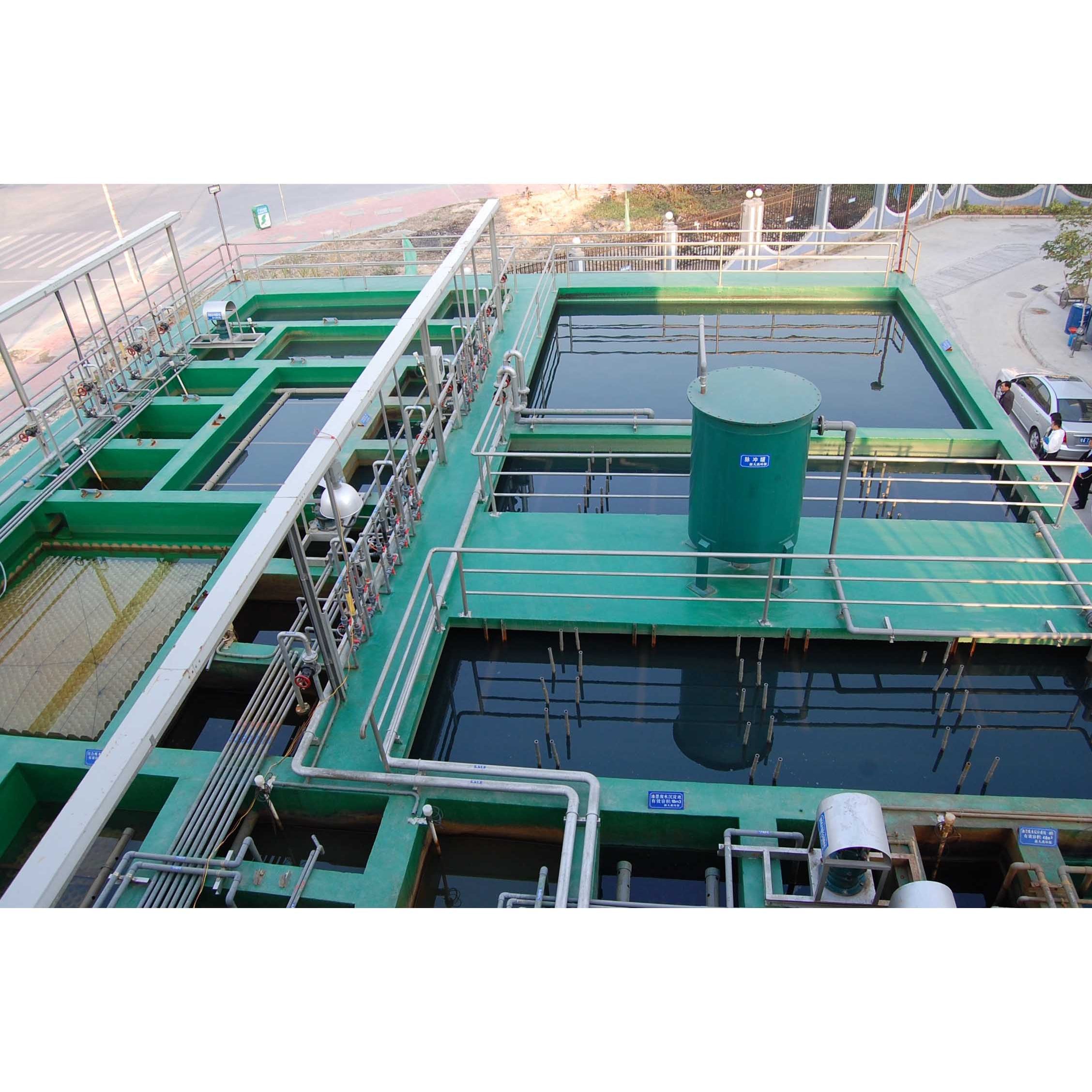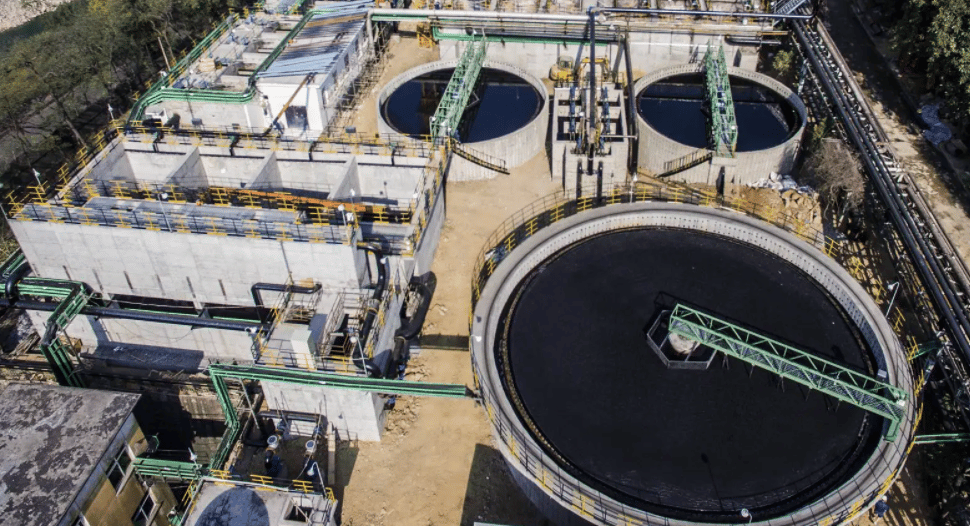Industrial Waste Water Treatment-- Comprehensive Systems for Wastewater Disposal
Industrial Waste Water Treatment-- Comprehensive Systems for Wastewater Disposal
Blog Article
Technologies and Developments in Hazardous Waste Water Therapy Technologies
The landscape of commercial wastewater treatment is undertaking a transformative shift, driven by technologies that boost both effectiveness and sustainability. Emerging innovations, such as membrane layer bioreactors and microbial fuel cells, are redefining pollutant removal procedures while contributing to energy generation. Additionally, resource recovery methods are gaining traction, lining up with circular economic situation concepts. As governing requirements develop, the integration of AI and artificial intelligence into wastewater monitoring systems assures to simplify operations and guarantee compliance. Nonetheless, the full implications of these innovations increase important concerns regarding their scalability and long-lasting influence on industry techniques.
Introduction of Drainage Therapy Technologies
Wastewater therapy modern technologies include a variety of approaches made to get rid of impurities from commercial effluents before their launch right into the atmosphere. These innovations are vital for keeping ecological equilibrium and making certain compliance with environmental guidelines. The main groups of wastewater therapy include physical, chemical, and biological methods, each serving distinctive functions based on the nature of the pollutants present.

Organic therapy techniques use microorganisms to deteriorate natural matter, making them specifically effective for organic-rich effluents. Methods like turned on sludge and biofilm activators harness the natural deterioration capacities of microorganisms, resulting in considerable reductions in biochemical oxygen need (FIGURE)
Advanced Purification Methods
Advanced filtering strategies represent an essential evolution in the realm of industrial wastewater therapy, improving the efficiency of pollutant elimination processes. Industrial Waste Water Treatment. These methods incorporate a series of innovations, consisting of microfiltration, ultrafiltration, nanofiltration, and reverse osmosis, which give sequential barriers for numerous fragment dimensions and chemical frameworks
Microfiltration and ultrafiltration make use of membrane layer systems to eliminate suspended solids, microorganisms, and larger natural molecules, improving the top quality of effluent before more treatment. Nanofiltration links the void in between ultrafiltration and reverse osmosis, effectively eliminating organic compounds and divalent ions, therefore decreasing the lots on downstream processes.
Reverse osmosis offers the highest degree of filtration by enabling just water and small molecules to travel through its semi-permeable membrane layers, making it optimal for reclaiming premium water from commercial effluents. Current improvements in membrane modern technology, including the development of more durable and fouling-resistant materials, have actually dramatically enhanced functional effectiveness and minimized expenses.
Integrating these innovative filtering techniques not just enhances the total treatment procedure but also adds to sustainability initiatives by allowing water reuse and resource recovery in industrial setups. (Industrial Waste Water Treatment)
Biological Therapy Innovations

Additionally, the growth of engineered biological systems, such as membrane layer bioreactors (MBRs), integrates organic treatment with innovative membrane filtration. This assimilation enables greater effluent high quality and decreased impact, making it suitable for space-constrained commercial facilities. Innovations in genetically engineered bacteria have also emerged, improving the biodegradation of specific impurities, such as drugs and heavy metals, that are commonly testing to eliminate.
In addition, the execution of bioaugmentation strategies, where useful germs are presented to boost the existing biological treatment procedures, has revealed promising lead to improving treatment performance. These developments jointly signify a trend towards more lasting and efficient organic therapy methods that can adjust to the progressing complexities of commercial wastewater streams. As markets remain to focus on environmental conformity, these biological technologies will play a critical role in wastewater management.

Source Healing Approaches
In industrial setups, the combination of resource recovery approaches has actually become progressively crucial for boosting sustainability and lessening waste. These techniques focus on removing beneficial materials and energy from wastewater streams, thereby changing prospective contaminants into reusable sources.
One prominent strategy is vitamins and mineral recovery, where nitrogen and phosphorus, typically present over in wastewater, are caught and exchanged fertilizers. This not just minimizes environmental impacts however also provides a circular economic situation solution for agricultural applications. In addition, technologies such as anaerobic digestion enable for the conversion of natural waste right into biogas, a renewable resource source that can offset nonrenewable fuel source use in commercial procedures.
Furthermore, advanced filtering and membrane innovations facilitate the recovery of commercial spin-offs such as steels and salts. These recovered materials can be reintegrated right into manufacturing processes, reducing the need for virgin sources.
Future Trends in Drainage Administration
As industries increasingly focus on sustainability, the future of wastewater monitoring is readied to go through substantial transformations. Technical innovations, such as fabricated intelligence and device discovering, will certainly allow much more reliable monitoring and monitoring of wastewater systems. These innovations can anticipate upkeep navigate to this website needs, optimize treatment procedures, and enhance decision-making, inevitably decreasing functional costs and environmental influence.
Additionally, the assimilation of round economic climate concepts will certainly play a vital role in wastewater administration. Industries are anticipated to move in the direction of systems that not just deal with wastewater but also recover important sources, such as nutrients, water, and power. This shift will decrease waste and promote the reuse of materials, lining up with international sustainability objectives.
Emerging treatment methods, such as membrane layer bioreactors and advanced oxidation processes, will certainly additionally improve the efficiency of wastewater treatment, allowing for greater high quality effluents ideal for reuse. In addition, governing structures are likely to develop, emphasizing stricter criteria for wastewater discharge and motivating industries to adopt innovative click over here now therapy options.
Final Thought
To conclude, the advancement of commercial wastewater treatment technologies shows a considerable change in the direction of boosted effectiveness and sustainability. Advancements in advanced filtering methods, organic treatments, and source healing approaches highlight the industry's dedication to ecological stewardship. The assimilation of expert system and artificial intelligence better enhances these procedures, ensuring regulatory conformity and promoting a round economic situation. Proceeded improvements in these areas will play a critical role in shaping the future of wastewater monitoring and safeguarding vital water resources.
The landscape of industrial wastewater therapy is undergoing a transformative shift, driven by developments that boost both efficiency and sustainability.Wastewater therapy modern technologies incorporate a range of methods created to eliminate impurities from industrial effluents prior to their release right into the environment.Utilizing the power of organic procedures has actually led to considerable technologies in the treatment of commercial wastewater.Furthermore, the application of bioaugmentation methods, where useful microorganisms are presented like it to enhance the existing organic therapy procedures, has actually shown promising results in boosting treatment efficiency. These developments collectively symbolize a pattern towards even more effective and sustainable organic treatment methodologies that can adjust to the progressing intricacies of commercial wastewater streams.
Report this page